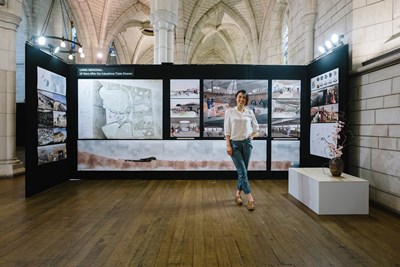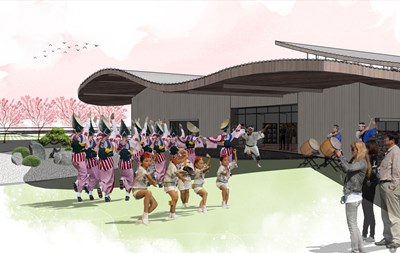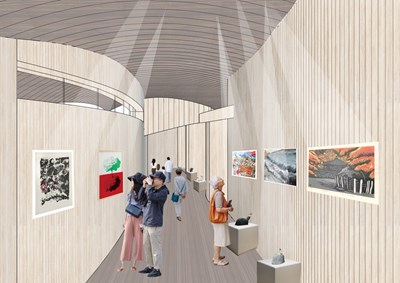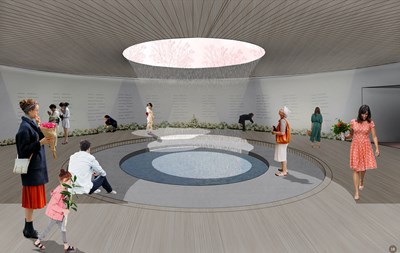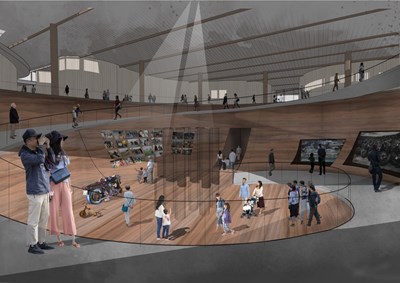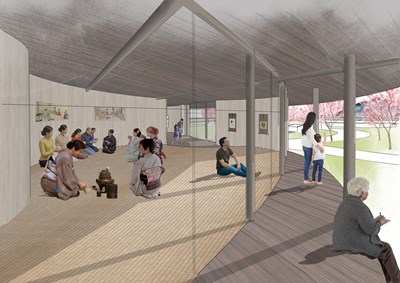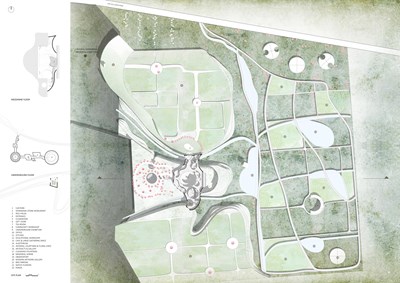Olivia Chiang from Te Whare Wānanga o Wairaka, Unitec, School of Architecture was a finalist in the Te Kāhui Whaihanga Resene 2020 Student Design Awards for her project 'Living Memorial: 10 Years After the Fukushima Triple Disaster'.
Project description
A decade after the 2011 Fukushima triple disaster - the earthquake, tsunami and nuclear meltdown - some towns in the area are still largely abandoned. Since 2017 when the evacuation order was lifted, only 5% of the original population of Namie, a town 8km from the nuclear plant, has returned.
A single engraved stone monument near the cemetery on the outskirts of town commemorates those who died. The monument and the area is starting to attract visitors, yet despite the clean-up and government assurances about safety, the community’s economic future is precarious. This project designs another kind of memorial landscape and architecture to remember the disaster, to welcome visitors and to rebuild the community of Namie.
The project curates a journey for visitors across a memorial landscape, between the hills where gods reside in Japanese religious belief and the sea where many fishermen worked. The landscape is shaped to reflect the former farmland ditches and the volumes of earth excavated in the decontamination process. The spaces are choreographed for spatial richness through compression and expansion to gather the community and engage visitors. Educational workshops promote learning, public areas provide for social interaction, and small galleries narrate past events and house temporary exhibitions. An earthen bowl-shaped space forms the heart of the building. Visitors descend below grade as a solemn reminder of the tragedy. The sunken area exhibits important stories and artefacts from the past. This space leads visitors through an exhibition gallery to the underground memorial shrine from which they emerge into the light.
The project is a museum, educational centre, community hub, and crucially a living memorial that is designed to reaffirm life and celebrate the future.
Judges' citation
The triple disaster of Fukushima 2011 resulted in a massive loss of life as well as social, cultural, economic, environmental devastation for the region. As business begins to return to the area, communities remain fragmented and displaced. Olivia’s challenge was to design something for the community to help them remember their past and move forward, but never forget. This kind and thoughtful project curates a journey for visitors across a memorial landscape, between the hills where gods reside in Japanese religious belief and the sea where many fishermen worked. It seeks to draw people back to the region, offering a place of memorial that becomes a place of interaction, liveliness and proposes both regeneration of site and rehabilitation of people. Its respectful integration of Japanese culture and forms, spiritual beliefs, performance and seasonal repetitions imbues it with a tranquil, introspective yet regenerative and healing response to the ongoing collective trauma of place and peoples. The configuration of spaces and recognisable elements makes for an experience of place that is familiar, intimate and endearing. This is a place to which displaced communities can return to again and again to reaffirm their connections and remember.




